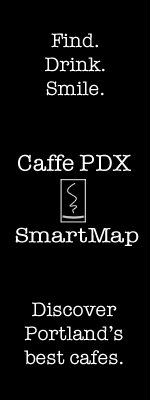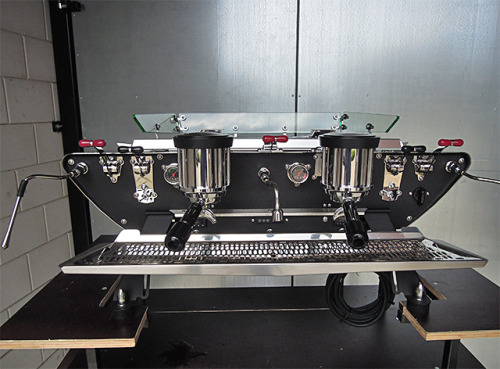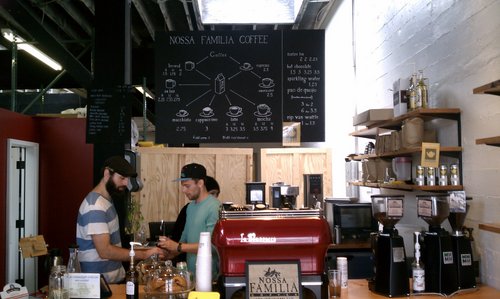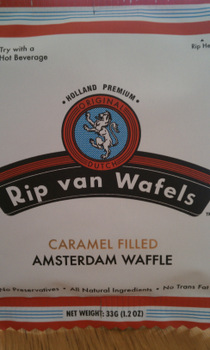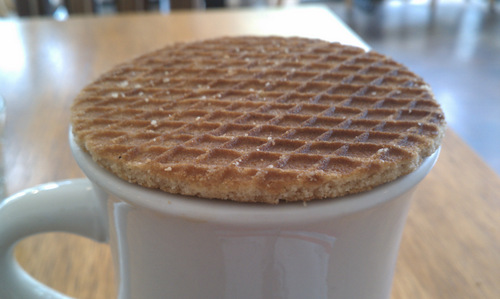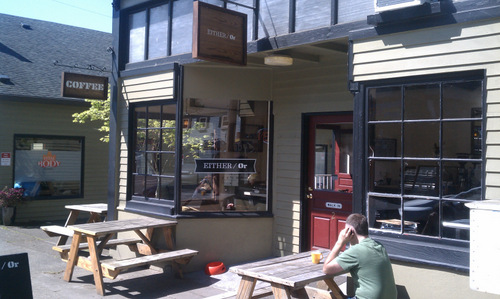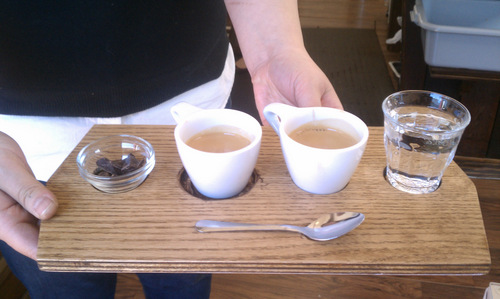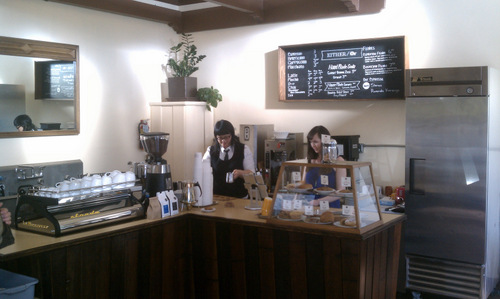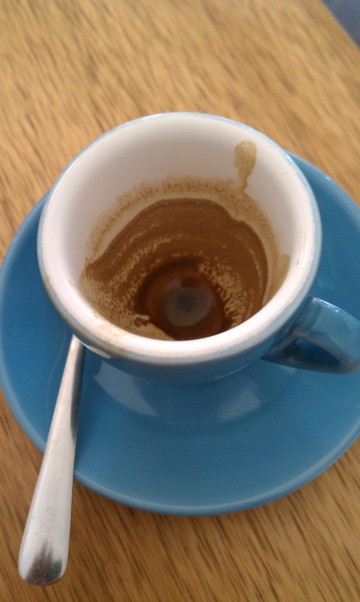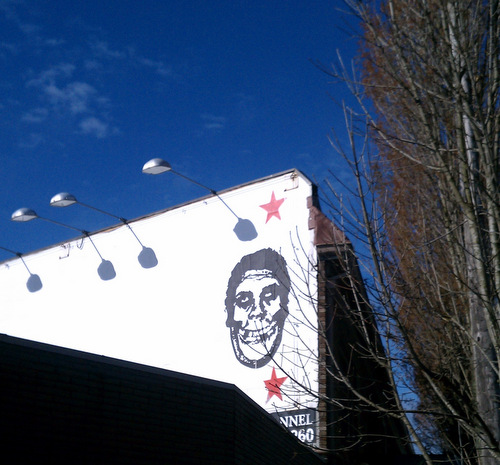Many coffee people have told me that being a barista is difficult. Whenever they say that, I am always skeptical. How hard could it be?
To find out, I took a two-day barista course at the American Barista and Coffee School last week. The class, led by ABCS’s Tom Pikaart and Sara Ziniewicz, was designed to give students a hands-on introduction to pulling espresso shots, steaming milk, pouring latte art, and maintaining equipment. Eight students took the class, at ABCS’s headquarters on Water Avenue. Some of the students had their own cafés, and others worked for roasters, supporting wholesale accounts. Most had at least some prior coffee knowledge or training.
In his opening remarks, Pikaart made it clear that the purpose of the course was not to perfect our technique. Rather, it was to teach us how to approach learning the craft of being a barista. No one can become an espresso expert in two days, he told us, but you can learn what you need to know to get started. If you have the right mindset, competence will follow. These were the five things he said we needed to focus on:
- Cleanliness
- Self-betterment (self-improvement)
- Passion
- Self-discipline
- Consistency
Dialing, pulling, steaming, pouring
After an introduction to the principles and procedures of making espresso, we moved over to the machines and got to work. One of the coolest things about ABCS is the number of different grinders and espresso machines students can try during the class. Our group spread itself out between four different espresso machines, and there were an additional three or four more we did not use.
The first activity was to dial in the grinders. To do this, we adjusted the distance between the grinder’s burrs, which changes the fineness of the grounds. Every day, as conditions in the café change (temperature, humidity, etc.), baristas must make small adjustments to the grind so the espresso tastes good. Knowing how to do this is a critical skill for a barista.
Once we had the grinders where we wanted them, it was time to make some espresso. The first shot I pulled was comically slow, and, as I had to stop and think about each step in the process. As we pulled more and more shots, my technique became more fluid. I would like to think my espressos got better over time, too.
After lunch, we moved on to milk. Steaming milk was less intimidating. Having steamed a lot of milk as a Starbucks barista, I had some idea of what to watch and listen for. It was fairly easy to adapt the techniques Tom and Sara told us about to what I already knew.
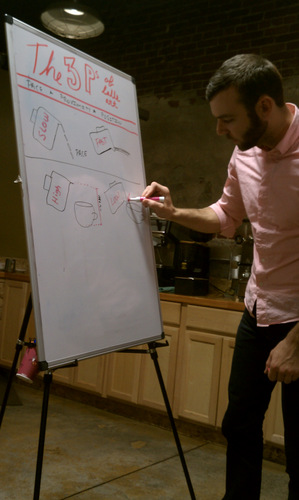 Tom Pikaart teaching latte art theory
Tom Pikaart teaching latte art theory
Pouring latte art, on the other hand, was completely new. Latte art, a common sight in Portland cafés, does not necessarily make the drink better, but it does indicate how serious the baristas in a café take their craft. This is an example of what we were aiming for:
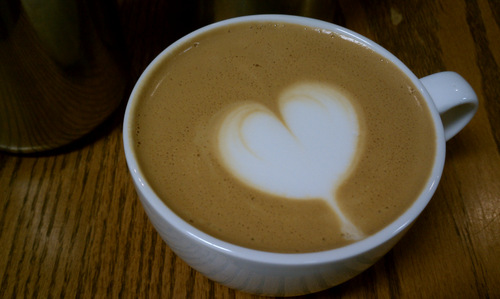 A soft heart, poured by our instructor
A soft heart, poured by our instructor
I found that pouring beautiful latte art is not easy, especially when you are starting out. (You can see a couple of my early tries below).
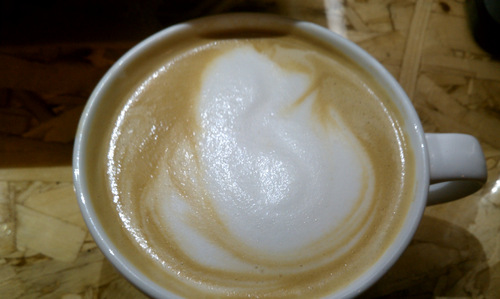 Not going to win any competitions, but not bad for a beginner
Not going to win any competitions, but not bad for a beginner
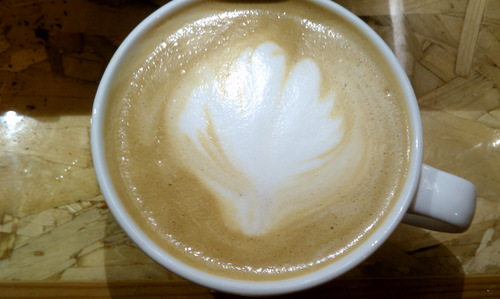 Getting better...
Getting better...
Teaching others
One of our exercises the second day was to teach a partner how to make a (caffè) latte. We had to write down (from memory) all the steps, then our partner was supposed to follow them exactly, no matter how many things we left out. I had thirty steps on my list, and I still forgot a couple. The lesson helped me understand why some café owners train their employees for a month before allowing them to make drinks for a customer. It takes time to make all these steps automatic.
Another important takeaway from the class was how important cleanliness is to the quality of the products. Both Tom and Sara emphasized how important it is to clean the machine regularly and thoroughly. Roasted coffee is full of oils that can creep into the hidden nooks and crannies on grinders and espresso machines. These oils degrade as they contact the air, and produce some funky flavors and odors if left long enough. For practice, we pulled our espresso machine apart and cleaned all the parts that come into contact with the coffee.
One thing that surprised me about the course was its emphasis on using our five senses to monitor the quality of our drinks. I had expected we would rely more on scales, stopwatches and thermometers, and while Pikaart advocated using these devices to check a barista’s consistency, he said we need to be able to use our senses. Measuring everything, every time, is too time-consuming to use in a café setting. and with practice and attention to detail, a barista can learn to be very accurate and consistent using just the five senses.
Lesson learned
After taking the class, I understand why people say being a barista is hard. With so many minute details that factor into making great drinks, you need to practice for a long time to become good. It takes time to master the skills of the craft.
“Being a professional is an attitude. It is not a skill set,” Pikaart told us, as he closed out the class. We might not start out as experts, but we will get there if we keep learning.
A good lesson not just for being a barista, but for life as well.
 Thursday, July 25, 2013 at 9:37AM
Thursday, July 25, 2013 at 9:37AM 